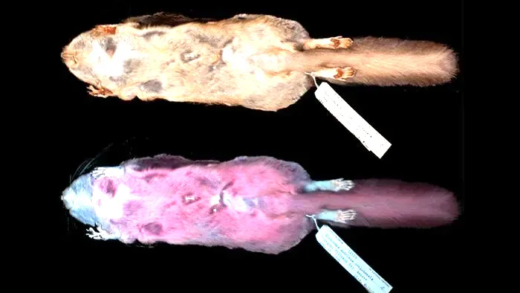Gas pumps use advanced technology to detect full tanks and prevent spills through mechanisms like sensors and automatic shut-off systems. Common misconceptions about gas pumps include myths about their reliability and functionality. While malfunctions can happen, they are rare due to regular maintenance. The future of gas pump technology looks promising with smart systems and enhanced safety features.
How Do Gas Pumps Detect a Full Tank?
Gas pump operation relies heavily on mechanisms that signal when a tank is full. The main feature that enables this is a simple yet effective system involving a venturi tube. When the fuel tank reaches its capacity, the air pressure in the tank increases, affecting the flow of fuel through the nozzle.
Here’s how it works:
- The nozzle is equipped with a small hole near its tip, which is connected to the venturi tube.
- As fuel flows into the tank, the air pressure in the tank decreases.
- Once the tank is full, the air pressure rises, causing fuel to back up into the nozzle.
- This triggers a mechanism that shuts off the flow of gasoline.
This automatic shut-off feature prevents overfilling and spilling, enhancing safety at gas stations. Understanding these basics can demystify how gas pumps function, ensuring users are aware of the technology that keeps fuel dispensing safe and efficient.
The Role of Sensors in Gas Pumps
Gas pump sensors play a crucial role in preventing gasoline overflow. They are designed to monitor the flow of fuel and the level of gasoline in the tank. These sensors ensure that the pump operates correctly and safely, significantly reducing the risk of spills.
Key functions of gas pump sensors include:
- Flow Detection: Sensors detect the rate at which fuel is being dispensed, ensuring it aligns with the expected flow rate.
- Level Monitoring: They monitor the fuel level in the tank, providing real-time data to the pump’s control system.
- Automatic Shut-off Trigger: If a full tank is detected, sensors send a signal to the pump to shut off, preventing any overflow.
These sensors have evolved over time, utilizing advanced technology to enhance accuracy and reliability. This evolution has led to significant improvements in safety standards across the industry.
Mechanisms Behind Gas Pump Shut-off
The automatic shut-off process of gas pumps is a remarkable mechanism that prevents fuel spillage. It is designed to react quickly to changes in pressure and flow, ensuring that once a tank is full, fuel delivery ceases immediately.
The shut-off mechanism operates through a combination of air pressure and a float valve. Here’s a breakdown of how it functions:
- Pressure Changes: As the tank fills, air pressure changes within the tank.
- Float Valve Activation: A float valve rises with the fuel level, which eventually triggers the shut-off mechanism.
- Signal to Pump: This activation sends a signal to the pump to halt the flow of gasoline.
This combination of features not only enhances the efficiency of gas pumps but also ensures environmental safety by preventing gasoline spills. By understanding these mechanisms, users can appreciate the technology that keeps fuel dispensing both safe and efficient.
What Happens Inside the Nozzle When the Tank is Full?
When a gas tank is full, the gas nozzle performs a fascinating dance of mechanics to prevent overflow. The key to this operation is the nozzle’s internal design, which includes a series of valves and sensors that work together to stop the flow of gasoline. Here’s how it unfolds:
- Fuel Flow Detection: As the tank fills, fuel enters the nozzle, which is equipped with a sensing mechanism that detects the rising fuel level.
- Back Pressure Trigger: Once the fuel level reaches a certain point, back pressure builds up in the nozzle. This pressure is detected by a small hole in the nozzle that connects to a venturi tube.
- Shut-off Activation: The increase in back pressure causes a valve within the nozzle to close, effectively stopping the flow of gasoline. This is a critical step to avoid any spills.
Additionally, the design of the nozzle ensures that even if the tank is filled too quickly, the shut-off mechanism activates without delay. This advanced engineering prevents any gasoline from spilling onto the ground, thus maintaining safety and reducing environmental impact.
Why Gas Pumps Don’t Spill Gasoline Anymore
Gas pumps have undergone significant design improvements over the years, which have led to their remarkable ability to prevent gasoline spills. The combination of advanced technology and thoughtful engineering is the backbone of this evolution.
- Enhanced Nozzle Design: Modern nozzles feature sophisticated mechanisms that react quickly to changes in fuel levels, ensuring a precise shut-off when the tank is full.
- Improved Sensor Technology: Sensors are now more accurate and responsive, allowing gas pumps to detect full tanks faster and more reliably.
- Venting Systems: New venting systems have been implemented to manage pressure changes effectively, which helps in reducing the chance of overflow.
These advancements have led to a significant decrease in spills, enhancing safety for both consumers and the environment. The result is a more efficient gas pump operation that aligns with modern safety standards.
The Design of Gas Pumps and Its Impact on Functionality
The design of gas pumps plays a crucial role in their functionality. From the shape of the nozzle to the arrangement of internal components, every detail contributes to the pump’s efficiency and safety.
- Ergonomic Nozzle Shape: The design of the nozzle allows for easy handling and precise control, minimizing the risk of accidental spills.
- Material Quality: The materials used in gas pump construction are chosen for their durability and resistance to corrosion, ensuring long-term reliability.
- Integrated Safety Features: Modern pumps include various safety mechanisms, such as automatic shut-off and pressure relief valves, which enhance overall functionality.
By understanding the thoughtful design behind gas pumps, users can appreciate how these machines not only dispense fuel but also contribute to a safer fueling experience. The combination of these design elements ensures that gas pumps operate effectively, reducing the likelihood of malfunctions and spills.
Common Misconceptions About Gas Pump Operation
Gas pump operation is often misunderstood, leading to several myths that can affect consumer behavior. One of the most common misconceptions is that gas pumps can malfunction at any time without any warning. In reality, modern pumps are designed with numerous safety features that minimize the chances of malfunction. Here are some prevalent myths about gas pumps:
- Myth 1: Gas pumps spill gasoline frequently.
- Myth 2: All gas pumps are the same; they function identically.
- Myth 3: You can fill up a tank faster if you hold the nozzle at an angle.
- Myth 4: The gas price is the same everywhere, regardless of the pump’s technology.
Understanding the true operation of gas pumps can prevent unnecessary anxiety and misconceptions. For instance, the automatic shut-off feature is designed to prevent spills and is highly reliable. By debunking these myths, consumers can approach the fueling process with greater confidence.
Can Gas Pumps Malfunction?
While gas pumps are built to be durable and reliable, malfunctions can occur. Common issues include sensor failures, which may prevent the pump from detecting a full tank, leading to potential overflows. Other malfunctions can include:
- Clogged Filters: If fuel filters become clogged, the pump may struggle to deliver gasoline efficiently, causing delays.
- Electrical Failures: An electrical issue can cause the automatic shut-off mechanism to fail, risking fuel spills.
- Wear and Tear: Over time, components can degrade, affecting the overall performance and reliability of the pump.
Recognizing these potential malfunctions is crucial for safety. Regular maintenance of gas pumps at stations helps mitigate these risks, ensuring a smoother and safer fueling experience for customers.
The Future of Gas Pump Technology
Advancements in gas pump technology are on the horizon, aiming to enhance both efficiency and safety. Future gas pumps may incorporate features such as:
- Smart Technology: Integration of IoT devices could allow for real-time monitoring and alerts for maintenance needs.
- Contactless Payment Options: Enhanced payment systems could streamline the fueling process, making it quicker and more convenient.
- Advanced Sensors: Future pumps might utilize even more sophisticated sensors to improve the accuracy of fuel dispensing and overflow prevention.
As technology evolves, gas pumps are likely to become more efficient, safer, and user-friendly. This evolution will not only improve consumer experience but also contribute to environmental protection by minimizing spills and waste.





Comments are closed.